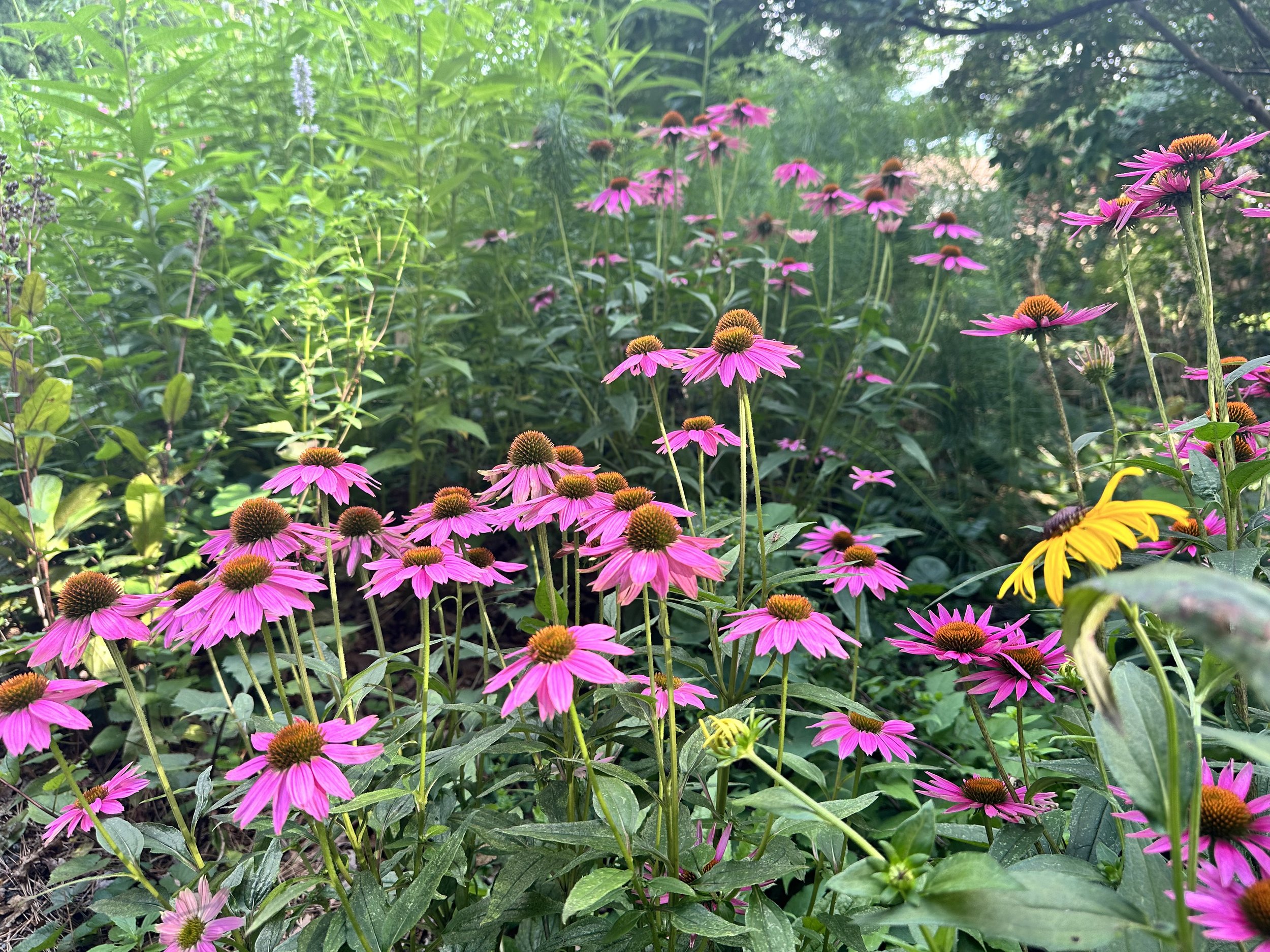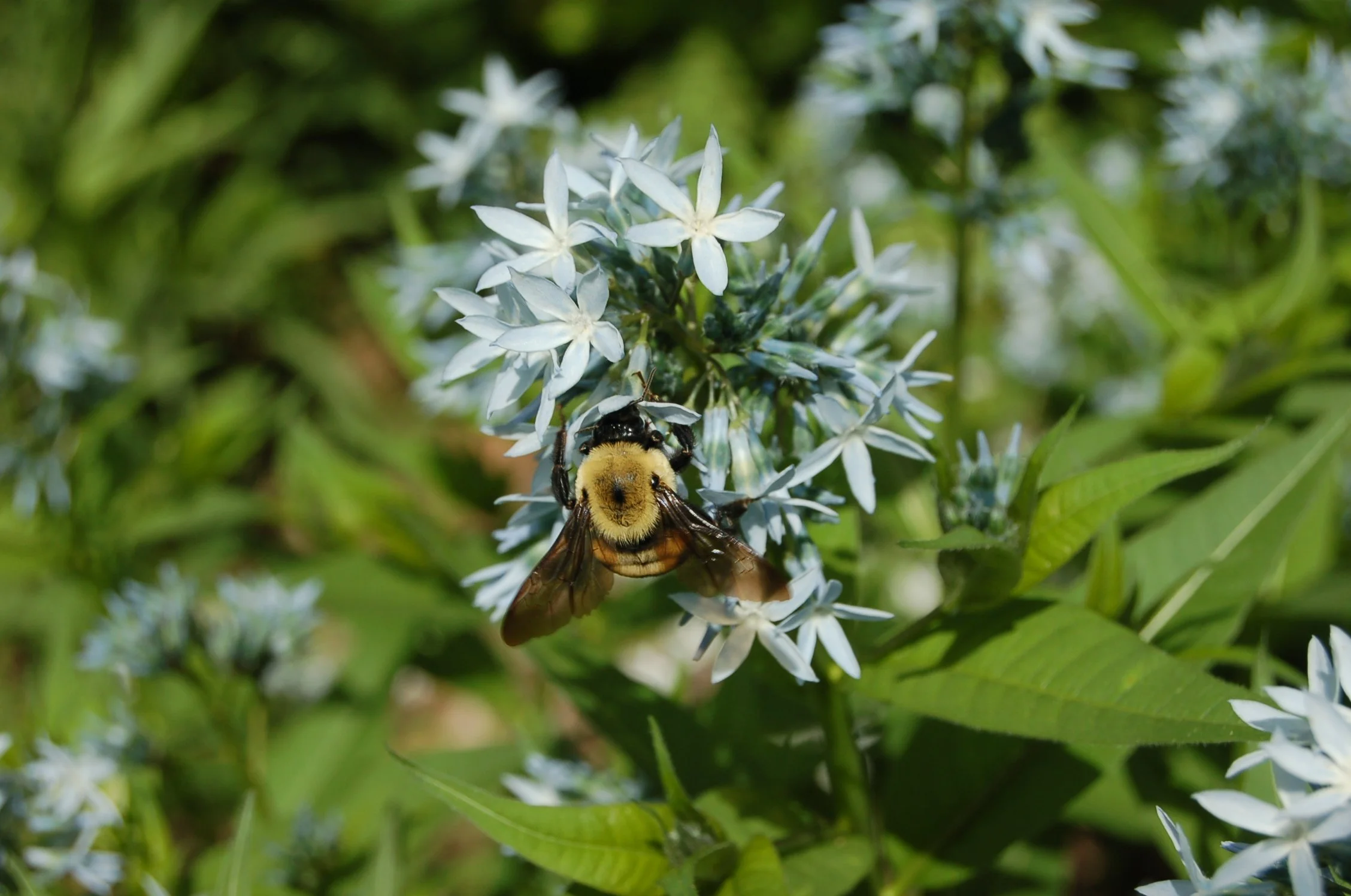Our Favorite Natives
These are some of our tried and true perennials. There are over 2,100 plants and grasses native to the Pennsylvania biome. This list is a brief sample of what could bloom to bring nature to your backyard.
-
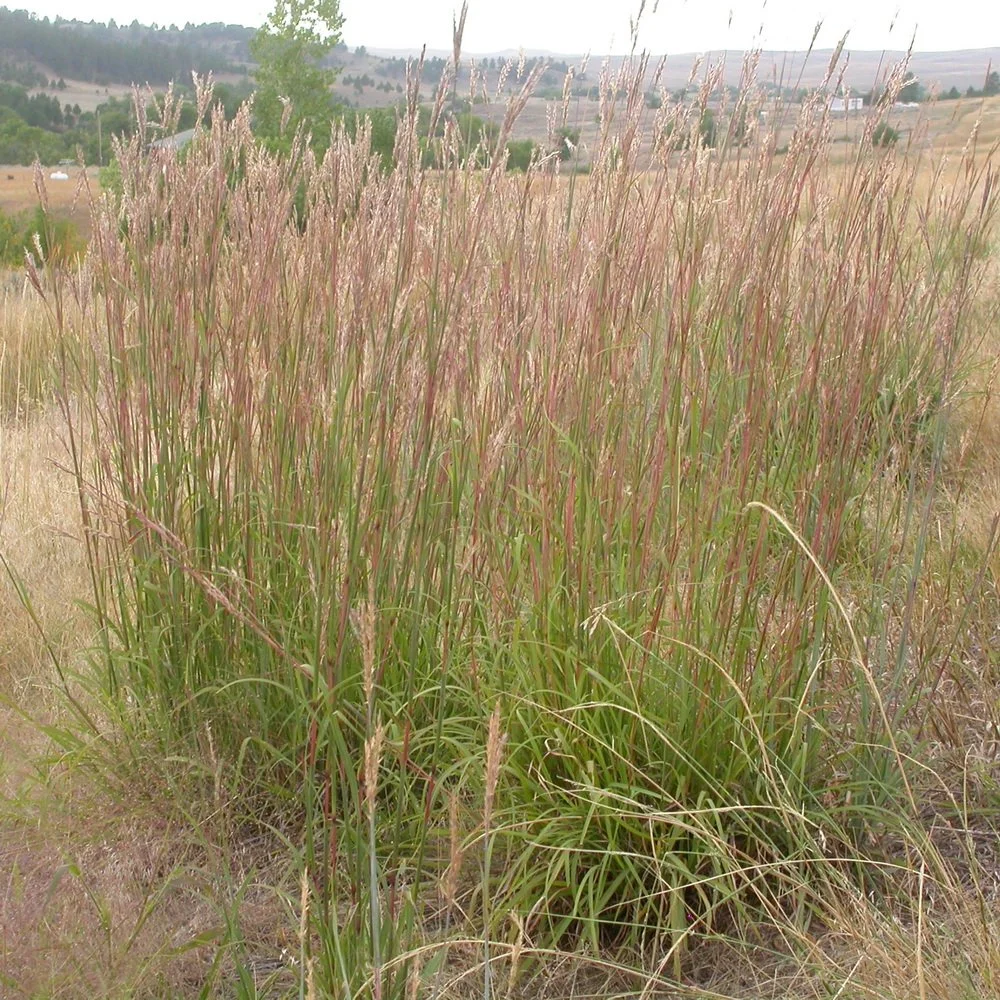
Big Bluestem
Andropogon geradii
H: 4’-6’ W: 2’-3’
An upright and tall warm season grass that is tolerant of a wide range of soils. It is not recommended for small spaces. The foliage is attractive and green and turns to vibrant gold and pink in the fall. Playing a crucial role in prairies, it is the host to many insects and a habitat for many small birds and mammals.
-
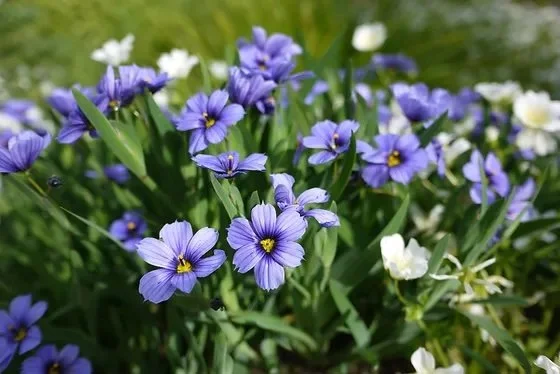
Blue-eyed Grass
Sisyrinchium angustifolium
H: .5’-2’ W: .5’-1’
A resilient perennial that grows in a wide range of soil and sun conditions. The silvery blue green grasslike leaves blooms blue-lavender petals on its tips in the early summer. Brings nectar to pollinators before larger summer flowers begin. A clump forming plant that's easy to propagate by division and transplant.
-

Blue False Indigo
Baptisia australis
H: 3’-4’ W: 2’-4’
Shrubby in nature this full sun, drought tolerant perennial stands out. Its silver textured foliage blooms deep blue flowers early summer. Its’ deep roots fix nitrogen in the soil and its seed pods provide food for birds in fall and winter. A host plant for many moths and butterflies.
-

Butterfly Milkweed
Asclepias tuberosa
H: 1’-2’ W: 1’-1.5’
Emerges in the late spring with distinctive beautiful orange flowers. It is an essential larval host and food source for the Monarch butterfly which was recently placed on the endangered species list. Not only is it a great addition to any garden but is needed for the survival of Monarchs.
-
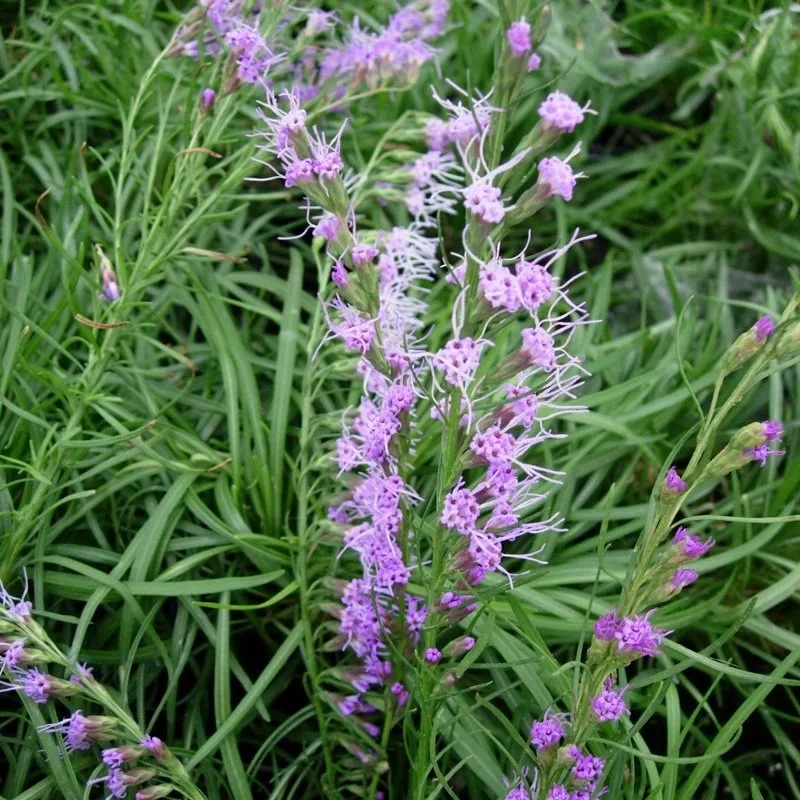
Dwarf Blazing Star
Liatris microcephala
H:1’-2’ W:.5’-1’
A small clump-growing perennial that sends up stalks of blooms of hundreds of small lavender pink flowers. A delicate but showy plant that will attract many native pollinators. It is the host plant to a plethora moth species. In the fall birds will feed on the seeds.
-
Eastern Bluestar
H:2’-3’ W: 2’3’
Amsonia tabernaemontana
The late spring blue flowers attract many long tongued pollinators such as the carpenter bee and hummingbird moth. Its dense habit remains upright in sunny locations and the fall color is show stopping. Its toxic white sap in the foliage makes it reliably rabbit and deer resistant.
-
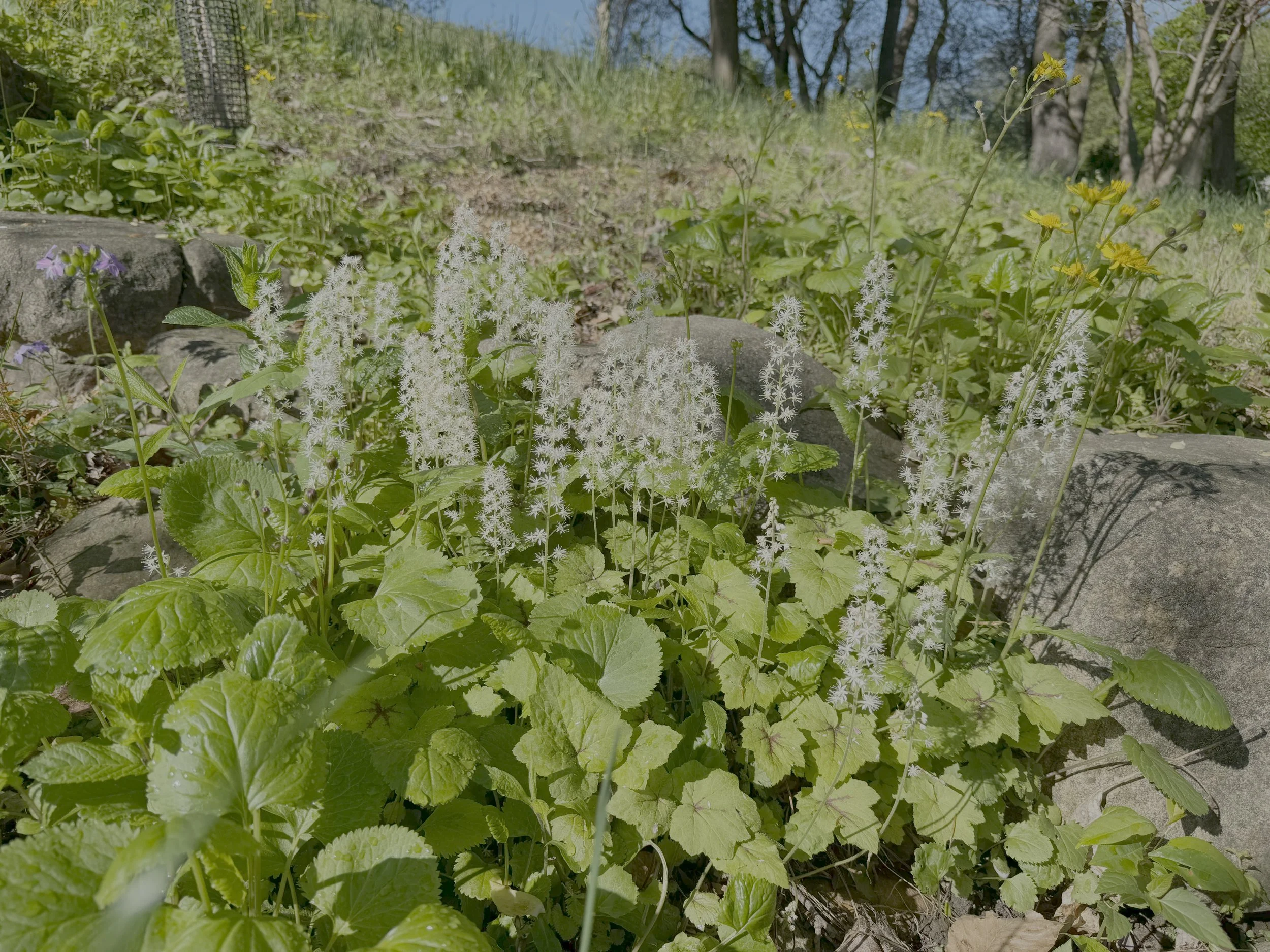
Foamflower
Tiarella cordifolia
H: .5’-1’ W: 1’-2’
This woodland plant offers its unique white foamy flowers in the early spring. A unique foliage that grows spike-like flowers from the heart shaped leaves sprawling along the garden. Tiarella creates a good groundcover that remains semi-evergreen over the winter.
-
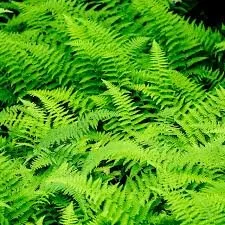
Hay Scented Ferns
Dennstaedia punctilobula
H: 1’-3’ W: 3’-6’
Known to grow in dry shade, this gentle and soft fronded fern has dense foliage which create habitat for woodland mammals and birds. The colonies create micro-climates that protect insects and soil organisms. Ferns turn a bronze color and create a hay scent late summer.
-

Little Bluestem
Schizachyrium scoparium
H: 2’-4’ W: 1’-2’
This plant tolerates hot and sunny conditions. A beautiful warm season grass has an upright growing habit and white flowers in late summer. The blue-green foliage fades to shades of bronze and orange in the fall. Upland birds use this plant for cover and is a popular nest building material.
-

Mountain Mint
Pycanthemum muticum
H:1’-3’ W: 1’-3’
An aromatic perennial that brings a rich minty scent to the landscape. The silvery appearance brightens up the garden. The flowers attract a plethora of native pollinators and will be buzzing with life. It is excellent for fresh or dried flower displays.
-

Pennsylvania Sedge
Carex pensylvanica
H: .5’-1’ W: .5’-1’
This cool season grass will naturalize as a groundcover in part and full shade gardens. The fine textured grass makes a good choice for lawn replacement. It grows with rhizomatous roots and transplants easily throughout the garden.
-

Prairie Dropseed
Sporobolus heterolepsis
H: 2’-3’ W:2’-3’
A warm season tufted grass that brings a slender green texture to the garden with bursts of pink and brown seed heads floating above the stems. It has a unique fragrance. In the fall the stems turn a bright hue of golden color. It grows in hot and dry regions of the Appalachians and the host plant to the endangered Poweshiek Skipperling and Dakota Skipper.
-
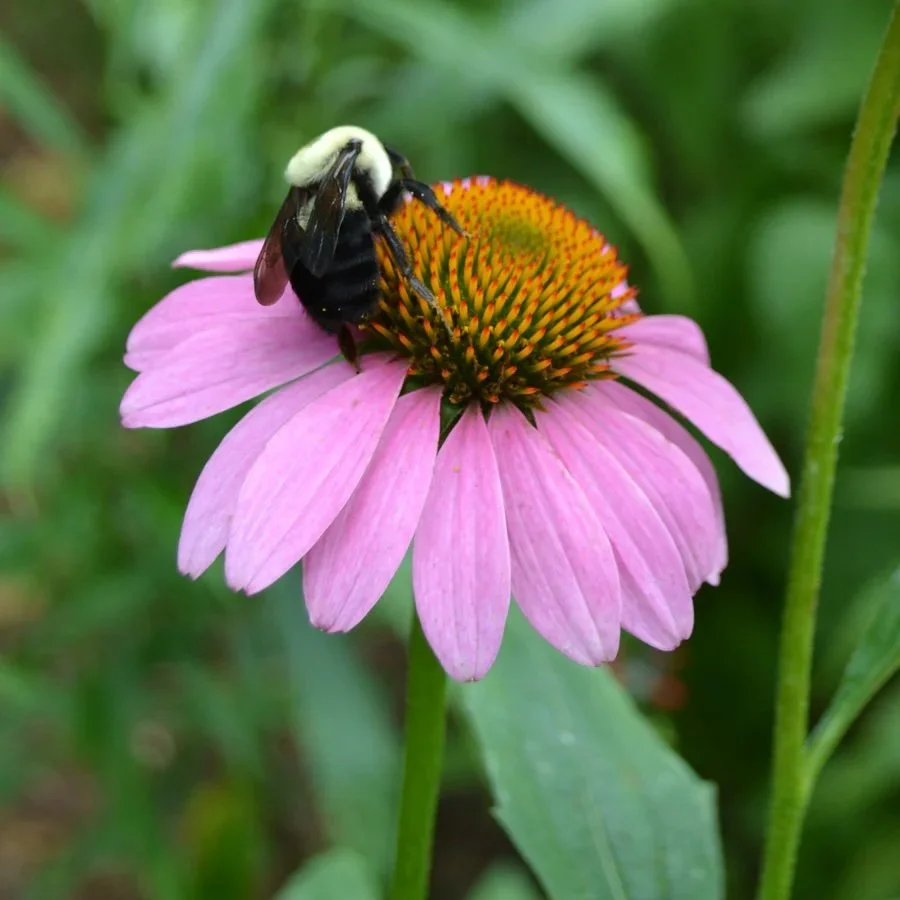
Purple Coneflower
Echinacea purpurea
H: 2’-5’ W: 1’-2’
This native plant typically blooms from mid-summer to early fall with daisy-like flowers with vibrant purple petals. The sturdy, slightly hairy stems are adorned with lance-shaped leaves that provide a lush backdrop for the striking blooms. This beautiful flower is loved by pollinators in the summer and its dead flowerheads feed many non-migratory birds in the winter such as the Goldfinch.
-

Red Cardinal Flower
Lobelia cardinalis
H:2’-4’ W:1’-2’
A showy perennial for the late summer and early fall. It grows tall and blooms beautiful scarlet red flowers. It grows in full and partial sun and wetland gardens. Attractive to the ruby throated hummingbird and many butterfly species.
-

Red Columbine
Aquilegia canadensis
H: 3’ W: 1’-1.5’
A reliable perennial that can grow in a wide range of conditions. It blooms unique red and yellow bell shaped flowers in the spring through summer. Attractive to many pollinators and especially hummingbirds. It is the host plant for the Columbine Duskywing butterfly.
-

Scarlet Bee Balm
Monarda didyma
H: 2’-4’ W: 2’-3’
These phenomenal bright red flowers bring vibrant blooms to any summer garden. It thrives in many soil conditions from dry to wet in full and partial sun. It spreads from its roots but the seeds are easy to collect and share. The intense red color and tubular flowers are attractive to hummingbirds.
-

Sweet Goldenrod
Solidago odora
H: 2’-3’ W: 1’-2’
Sweet solidago can handle sun or some shade and many soil conditions and is well behaved when compared to other species of solidago. Named for its fragrant foliage, this plant has bright yellow flowers in late summer. The nectar rich flowers are invaluable to pollinators and it is a critical food source for Monarchs before their migration. Birds enjoy their seeds all winter long.
-

Threadleaf Bluestar
Amsonia hubrichtii
H: 2’-3’ W: 2’-3’
A notable perennial with billowing feathery thread like foliage that brings a unique texture to the garden. In the late spring small blue flowers bloom and it displays an exceptional golden hue in the fall. It attracts many pollinators and is a host to swallowtail butterflies.
-
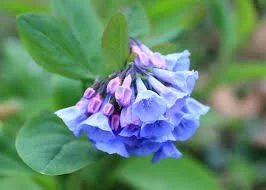
Virginia Bluebells
Mertensia virginica
H:1’-2’ W: .5’-2’
The first sign of spring and a crucial native for any ecological garden. Thriving in dappled shade and moist woodland conditions. A true ephemeral blooming early and then disappearing as the summer heats up. Pollinator depend on the nectar and the migratory birds depend on those insects’ larvae to feed young.
-

White Wood Aster
Eurybia divaricata
H:1’-1.5’ W: 1’-1.5’
Blooming from late summer to early fall, this plant showcases clusters of small, white to pale lavender daisy-like flowers. This perennial thrives in a variety of conditions, favoring moist, well-drained soils in shaded or partially shaded areas, it makes an excellent choice for woodland gardens or naturalized areas.
-

Woodland Phlox
Phlox divaricata
H: .5’-1’ W: .5’-1’
A shade or partial shade perennial for drier soil conditions. A slow and steady grower, the flowers bloom in the early spring with a pale lavender blue color. Provides nectar to the seasons early pollinators including swallowtails, gray hairstreaks and Western Pygmy Blue butterflies.
FARMER MARKETS
FARMER MARKETS
4100 Ridge Avenue
Philadelphia, PA 19129
(Under the Twin Bridges)
East Falls Farmers’ Market
Select Saturdays 10am-1pm (Rain or Shine)
May 24, June 7, July 19, August 2, September 6 and October 4
4300 Silverwood Street
Philadelphia, PA 19127
Pretzel Park Farmers’ Market
Select Saturdays 10am-2pm (Rain or Shine)
April 19, May 10, June 21, July 26, August 16, September 20 and October 18
Germantown Avenue
Philadelphia, PA 19118
(From Rex Avenue to Willow Grove Avenue)
Chestnut Hill Home & Garden Festival
May 18, 2025: 11am-5pm
The Fallser Club
3721 Middle Avenue
Philadelphia, PA 19129
Solutionary Series: Lawn to Meadow
April 22, 2025 Earth Day: 7pm-9pm
